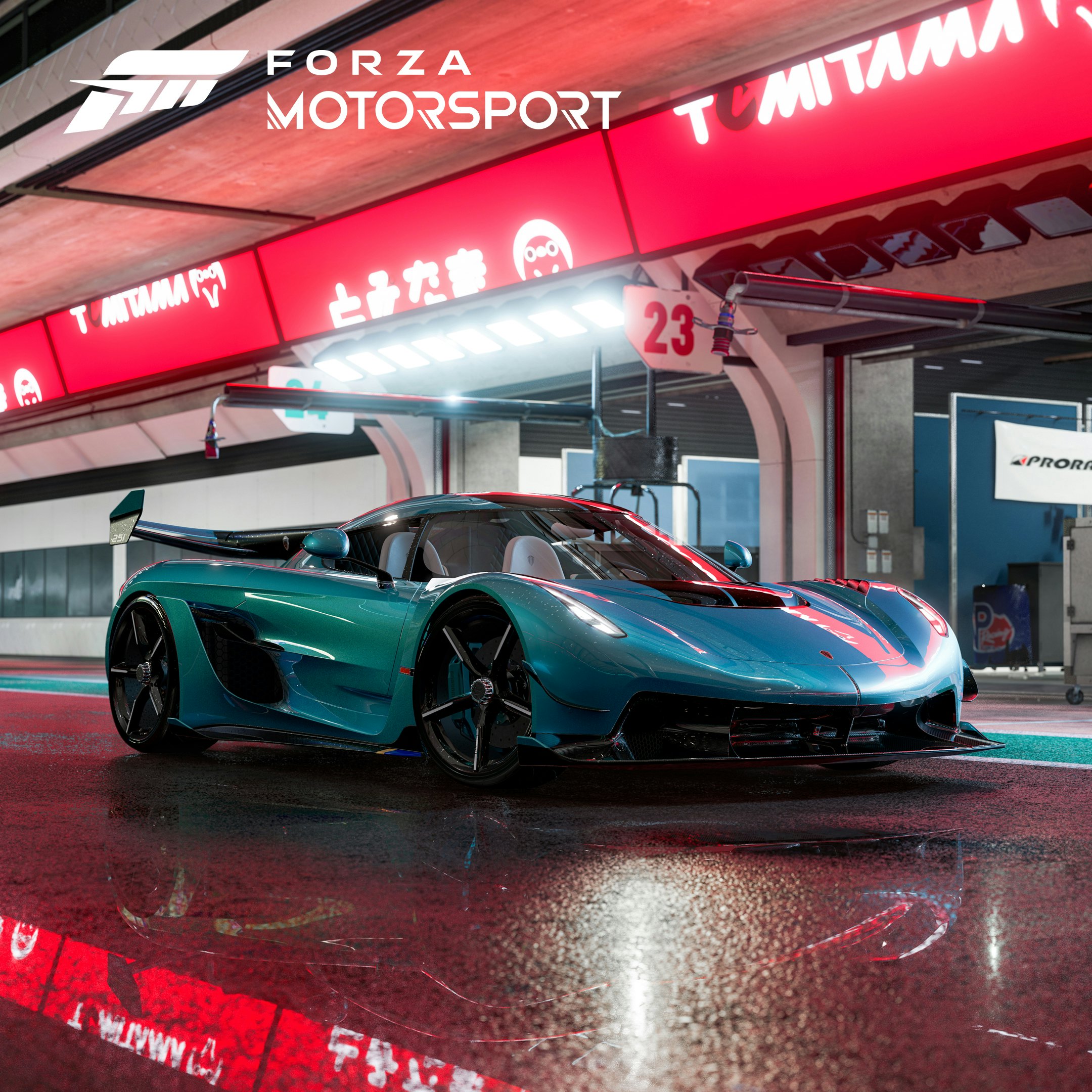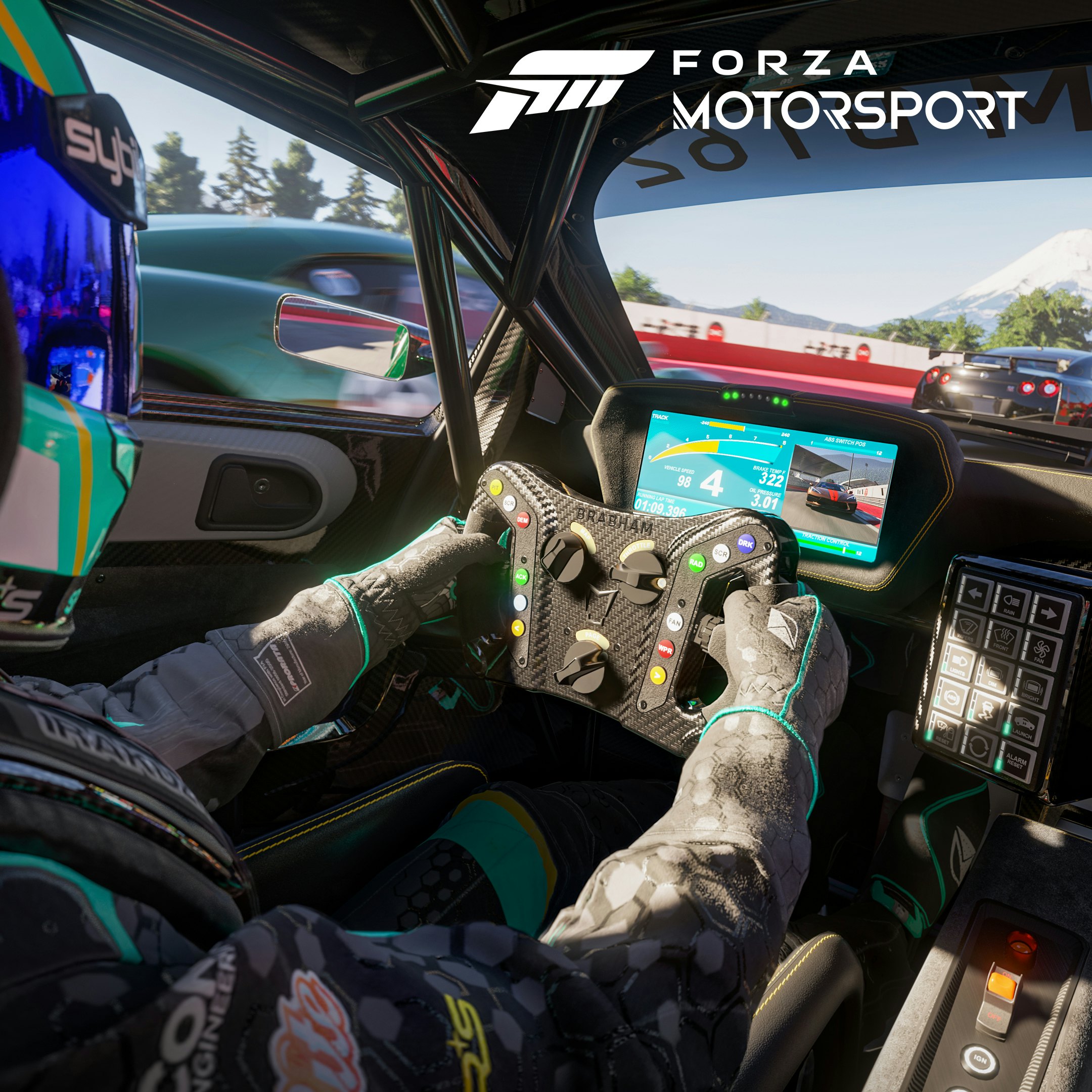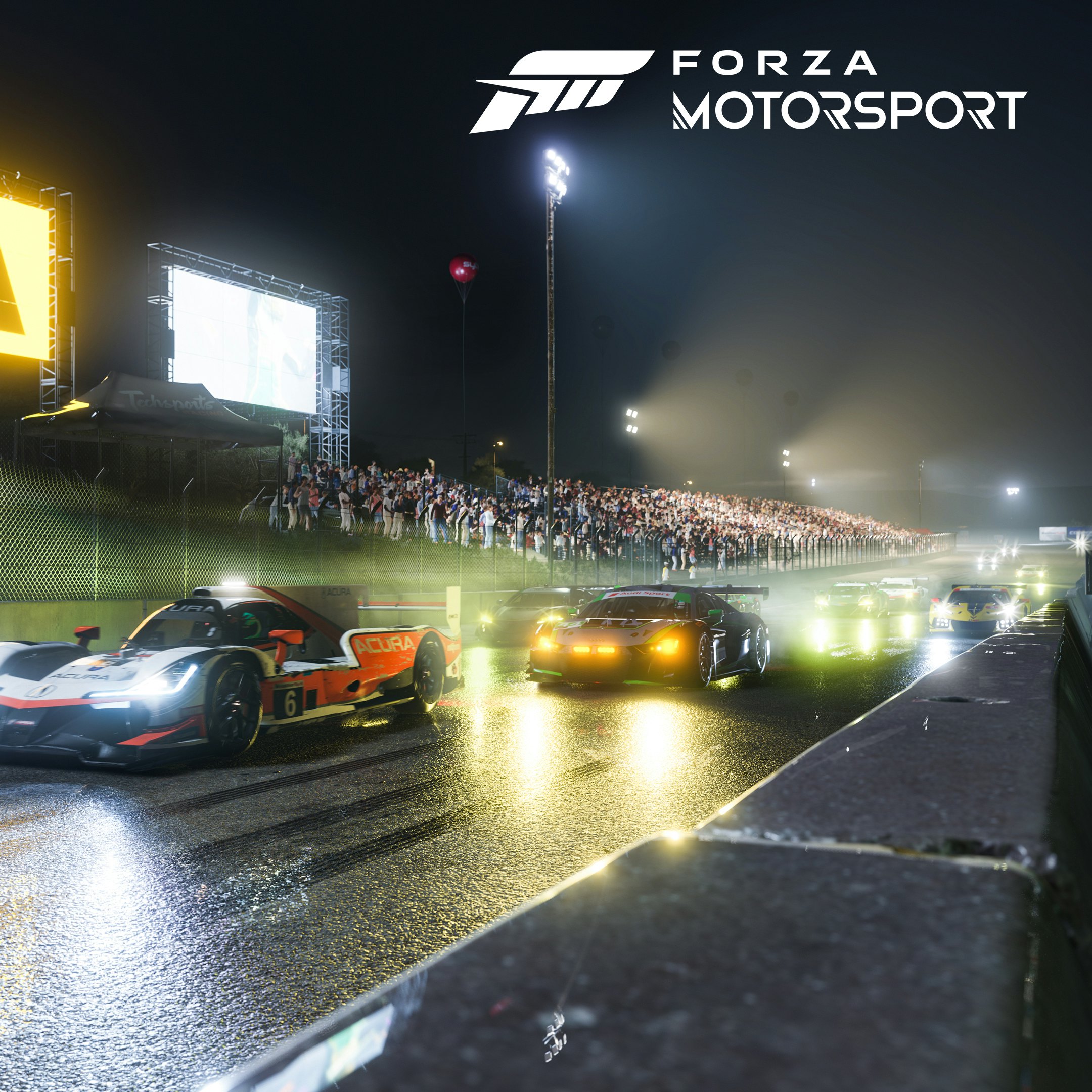
Racing sims can be intensely challenging, requiring sharp reflexes and speedy decision-making. Much of the information the player needs to complete a course is conveyed visually.
The developers of Forza Motorsport, which comes to Xbox and PC later this year, want to change that. The team at Turn 10 Studios created a set of supplemental audio cues that convey information about the racer’s position on the track, approaching and progressing through turns, how much deceleration is needed, and when to shift. This allows players who are Blind or have Low Vision to experience the thrill of getting behind the wheel of the world’s most powerful cars.
Gameplay and Accessibility Producer Neha Chintala says the aim was to maintain the challenge and sense of mastery for players with vision loss.
“Our goal was to create a feature set that would give as much information as sighted players have to our Low Vision and Blind players,” Chintala tells Inverse.
If that sounds like a formidable task, well, that’s because it was. Chintala has been working on Blind Driving Assists (BDA) and other accessibility features for Forza Motorspot for more than two years now, alongside Accessibility Development Lead Katrin Hilman and Accessibility Consultant Brandon Cole. All three sat down with Inverse to share how this wildly ambitious feat of game design became a reality.
This interview has been edited for brevity and clarity.
How do you build a system like this? Is it a series of tools that adapt to each track? Or are all of these cues individually scripted?
Cole: It’s both! The notifications of each turn, those are actually hand-coded into every single track by hand — it's amazing. I've been through every track so many times, just to make sure that those are correct. The audio cues are kind of hard-coded into the whole system overall, like the cue for deceleration, it's just part of the system. It's not individual to each track.
Chintala: Each kind of audio cue is its own system. You can use them all together, or you can individually choose which ones you'd like to use, as well as change the volume and pitch of each cue to suit your individual needs.
What were some of the challenges and opportunities in making a racing sim fully blind-accessible?
Cole: One of our biggest challenges was that every car handles differently. Some might be more difficult than others, but essentially all cars will work with our system. That was more difficult than you might think, because a lot of math goes into when the cues should play for turning, braking, deceleration, and so forth.
Chintala: We don't have an easy mode, as it relates to Blind driving. So all of the information that's provided to all of our players, regardless of what assist you use, is still the same. You can choose how you want to play, what you want to practice, and how you want to improve.

How would you describe the learning curve here for blind players?
Cole: There is absolutely a learning curve. And that learning curve exists for multiple reasons. Number one, we have built this collection of features that together equals Blind Driving Assists, and there are a lot of things you have to learn, like what all the audio cues mean.
The other part of the learning curve comes with being a Blind gamer in the first place. There's a chance that you've never even played a racing game. Many of these folks may have never driven a car before. There's a lot that I had to learn about basic things that the sighted take for granted. I had to learn that you slow down to go into a turn in a racing game. I thought you were supposed to go as fast as possible at all times. It’s little things like that.
What stands out as the breakthrough moment when you were developing BDA?
Cole: One of the biggest pain points was getting the guidance right, the system that pans the engine sounds left or right depending on which way you have to turn. You need to have enough time to react, but you don’t want to have too much time, because then you'll turn too early and cause all sorts of problems. It took a lot of tuning and a lot of adjustment.
After several weeks of tuning and adjustment, it finally clicked. We finally got it. It was just taking one turn correctly and not going off track all the time. That's when we knew we were gonna be able to do this.
Can you tell me a bit more about one-touch driving?
Hilman: The genesis for this came from feedback from the community on Forza Motorsport 7, namely that it was almost able to be driven with one touch, except for the throttle. In a racing game, you're holding down the throttle almost all the time, and it's a constant strain on your finger.
We added a throttle assist, so you don't have to hold that if you don't want. But there's no single one-touch driving setting in the game. Instead, there’s a toolbox of assists — you can turn on the throttle assist, as well as steering assist and braking assist, which have also been enhanced to make them more usable in more situations.
We don't actually want to tell anyone how to use it. We want to give them a set of features to use however they want. However they want to play, we want to support them to play that way.
Was there any collaboration with Playground Games on this project?
Chintala: We do a monthly meeting with Playground on accessibility features. While the underlying tech might be different, the goals are still mostly the same, and we have a shared commitment to accessibility.
There’s a lot of stuff that we have collaborated on, like screen reader technology. Building upon what they brought to Forza Horizon 5, the Motorsport side is bringing in narrator functionality and enhancing it to be a bigger and better system.
Cole: There is no game anywhere that has as much narrator functionality or customizability as our Forza game. There just isn't one. You can customize everything — you can make the narrator speak at a different rate. You can make it higher-pitched, and you can change the voice that it speaks in. You can decide what it says and what it doesn't say on every screen. It's huge, and it's awesome, and it works really well.

How would you like to see gaming accessibility move forward in the years ahead?
Chintala: Within five years, I'm hoping that all of our games are accessible to everyone. And that we develop sort of a shared baseline of things you can expect if you jump into any game.
Cole: I just want more. I just want the expansion of accessibility across the industry. When when I work on a project like this, one of my biggest hopes is that other developers take notice. Every example we can offer developers really could push the industry forward — as long as developers pay attention. And if they consider these ideas for their own projects, then it's a win for everybody.
I think this will be another one of those milestones, another one of those big steps forward for the industry as a whole.
Hilman: I hope people will look at what we’ve done and say, “Well, if someone was able to make a triple-A racing game with detailed physics simulation fully Blind accessible, then the sky's the limit. What can you do with other genres?”
I would dearly love other developers and publishers to try and outdo us with some other cool thing. That makes the whole gaming ecosystem better for everyone.
Forza Motorsport launches on Xbox consoles, Game Pass, and PC later this year.







